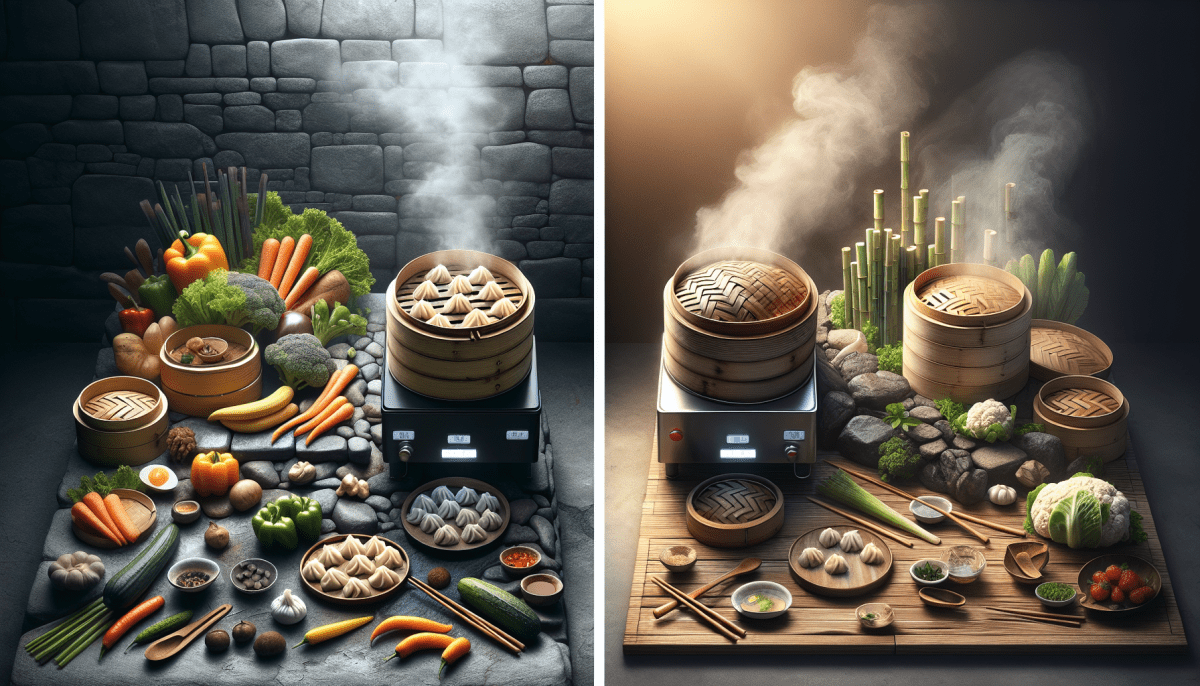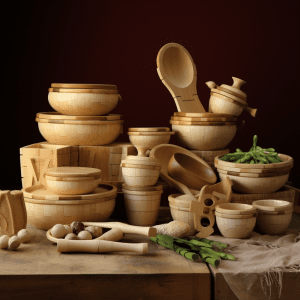When it comes to steaming food, two popular methods have emerged as top contenders: bamboo steamers and traditional steamers. Both options have their unique advantages and bring different qualities to the table. Let's delve into the debate of bamboo vs. traditional steamers to determine which method is best for you.
Bamboo Steamers:
For centuries, bamboo steamers have been widely used in Asian cuisine, particularly in China. The natural bamboo material offers excellent heat retention, allowing food to steam evenly while retaining its natural flavors and nutrients. Bamboo steamers are also lightweight and easy to handle, making them a practical choice for everyday cooking.
Traditional Steamers:
Traditional steamers, often made of stainless steel or aluminum, are commonly found in Western kitchens. While they may lack the elegance and charm of bamboo steamers, they make up for it in durability and versatility. Traditional steamers are generally more resilient and easier to clean, making them a convenient option for frequent use and larger quantities of food.
Unveiling the Power of Bamboo Steaming
When it comes to steaming food, bamboo steaming has been gaining popularity as an ancient and effective method. This traditional technique, which originated from East Asia, offers a range of benefits that set it apart from the more widely used traditional steaming methods. Bamboo steaming involves using a bamboo steamer basket, which allows for gentle and even heat distribution during the cooking process.
One of the notable advantages of bamboo steaming is its ability to retain the natural flavors and nutrients of the food being prepared. The steam generated from the bamboo basket helps to seal in the flavor and moisture, ensuring that the final dish is succulent and fully infused with its own natural taste. Unlike traditional steaming, where the food may be subjected to excessive heat and lose some of its original qualities, bamboo steaming offers a delicate balance that preserves the integrity of the ingredients.
Additionally, bamboo steaming is renowned for its eco-friendliness. Bamboo, being a highly sustainable resource, is often used for various practical purposes. Its use in steaming not only emphasizes its biodegradable nature but also contributes to its unique properties, such as its ability to resist heat and maintain structural integrity. This makes bamboo steamers both long-lasting and an eco-conscious choice for those who seek environmentally friendly cooking methods.
Exploring the Pros and Cons of Traditional Steaming
Traditional steaming has been used for centuries as a method of cooking various dishes, and it still remains popular in many cultures today. There are several advantages to using traditional steaming techniques, as well as some drawbacks to consider.
One of the major benefits of traditional steaming is its simplicity. All you need is a pot or a steamer basket, some water, and a source of heat. Unlike other cooking methods that require constant monitoring and adjustments, steaming requires minimal attention once the water has been brought to a boil. This makes it a convenient option for busy individuals or those who prefer a hands-off cooking approach.
Another advantage of traditional steaming is that it helps to retain the natural flavor and nutrients of the food. Steaming allows the ingredients to cook in their own juices, thereby preserving their original taste and texture. Additionally, because no oil or fat is required, steamed dishes are generally considered to be healthier than those cooked using other methods.
However, there are some downsides to traditional steaming that should be taken into account. One of the main drawbacks is the time it takes to steam certain foods. Steaming can be a slow cooking method, especially for larger or more dense ingredients. This can be a disadvantage for individuals who are looking for quick meal preparation.
Steaming Showdown: Which Method Reigns Supreme?
When it comes to steaming, two popular methods often come up for discussion: bamboo steamers and traditional steaming methods. Steam cooking is a healthy and versatile way of preparing food, ensuring that nutrients are retained and flavors are enhanced. In this article, we will compare the pros and cons of these two methods to determine which one is the ultimate winner.
Bamboo Steamers
Bamboo steamers have been used for centuries in Asian cuisine, and remain a popular choice for many cooking enthusiasts. These steamers are made from bamboo splints carefully woven together, allowing steam to circulate and penetrate the food evenly. One of the main advantages of bamboo steamers is their ability to add a subtle, natural flavor to the food, infusing it with a unique aroma that many people love. Additionally, bamboo steamers are known for their eco-friendly nature, as bamboo is a highly sustainable resource.
Traditional Steaming methods
On the other hand, traditional steaming methods, such as stainless steel or electric steamers, offer their own set of advantages. They are often more accessible and widely available compared to bamboo steamers. Traditional steamers are generally easier to clean and maintain, as they can be washed with soap and water without worrying about warping or cracking. They also provide a more precise control over the steaming process through adjustable settings and timers. Unlike bamboo steamers, they do not impart any natural flavor and retain the original taste of the food.
Both methods have their own merits, so the choice ultimately depends on personal preference and the type of dish being prepared. Some people might prefer the earthy aroma and slightly different taste acquired from bamboo steamers, while others might favour the convenience and precise control offered by traditional steamers. Whichever method you choose, steaming is a fantastic way to preserve the goodness of your ingredients and create delicious, healthy meals.
4.38 out of 5 starsBamboo Cookware
Sustainable and Stylish Cookware to Elevate Your Kitchen Experience
Product information
Product Review Score
Product links



